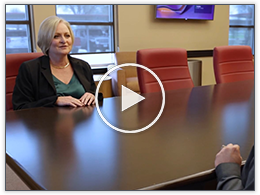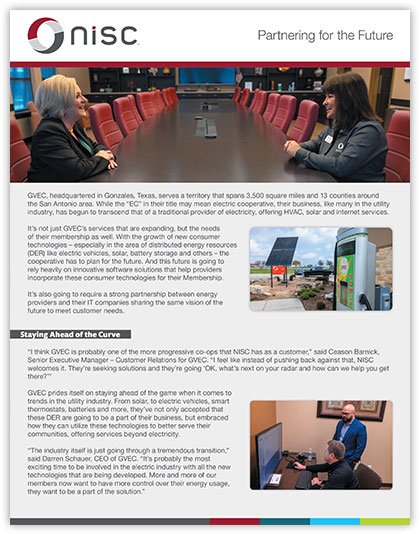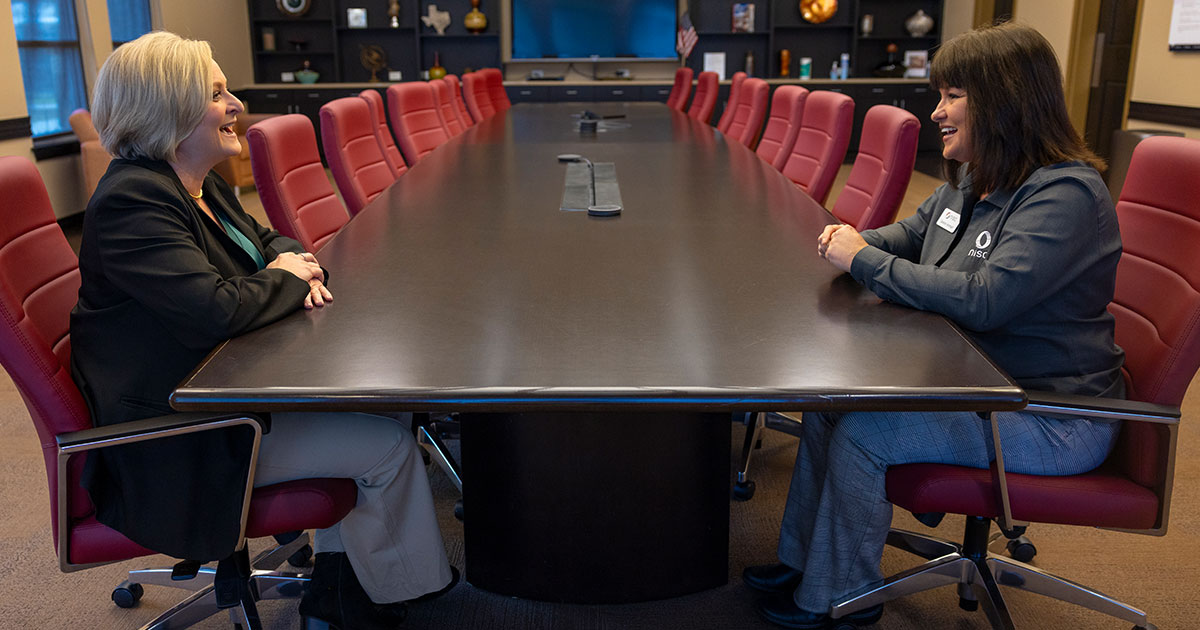GVEC, headquartered in Gonzales, Texas, serves a territory that spans 3,500 square miles and 13 counties around the San Antonio area. While the “EC” in their title may mean electric cooperative, their business, like many in the utility industry, has begun to transcend that of a traditional provider of electricity, offering HVAC, solar and internet services.
It’s not just GVEC’s services that are expanding, but the needs of their membership as well. With the growth of new consumer technologies – especially in the area of distributed energy resources (DER) like electric vehicles, solar, battery storage and others – the cooperative has to plan for the future. And this future is going to rely heavily on innovative software solutions that help providers incorporate these consumer technologies for their Membership.
It’s also going to require a strong partnership between energy providers and their IT companies sharing the same vision of the future to meet customer needs.
Staying Ahead of the Curve
 |
 |
| Click here to download |
“I think GVEC is probably one of the more progressive co-ops that NISC has as a customer,” said Ceason Barnick, Senior Executive Manager – Customer Relations for GVEC. “I feel like instead of pushing back against that, NISC welcomes it. They’re seeking solutions and they’re going ‘OK, what’s next on your radar and how can we help you get there?’”
GVEC prides itself on staying ahead of the game when it comes to trends in the utility industry. From solar, to electric vehicles, smart thermostats, batteries and more, they’ve not only accepted that these DER are going to be a part of their business, but embraced how they can utilize these technologies to better serve their communities, offering services beyond electricity.
“The industry itself is just going through a tremendous transition,” said Darren Schauer, CEO of GVEC. “It’s probably the most exciting time to be involved in the electric industry with all the new technologies that are being developed. More and more of our members now want to have more control over their energy usage, they want to be a part of the solution.”
While these new technologies bring opportunities, they also come with new and unique challenges that utilities have to find a way to overcome. New technologies, along with territory growth, lead to increased demand on the system. Along with members bringing their own rooftop solar systems and battery storage, finding a way to manage the system demand is critical.
“We at GVEC believe that every home here in the future, if that’s 10, 20, 30 years from now, will have solar, will have a battery, will have a smart thermostat,” said William Nichols,
Executive Manager of Power Supply and Data Analytics at GVEC. “We’re looking for ways to partner with our members to incentivize that kind of behavior.”
Outside of increased demand, the addition of DERs brings other unique challenges. Allowing members to add rooftop solar is one thing, but it has to be done correctly to avoid potentially catastrophic issues with the electric system.
“There are some risks there,” Nichols said. “If somebody interconnects a solar system that’s not up to our standards, and let’s say we have a line outage, and the member is still producing electrons that are feeding back into the system, then we have linemen out there that are working on sections of live line that we think are dead.”
It’s critically important that members exploring rooftop solar submit an interconnect agreement that ensures their solar addition is done correctly and won’t adversely impact the system. That process, however, can be a hassle for the member and the cooperative.
“The interconnections really became a monster for us about 18 months ago,” Barnick said. “It was a very manual process. Emails would come in, individuals would handle it and we’d call the customer back. There was no process that followed it all the way through.”
The challenges mount when staying ahead of the curve, but luckily the answer to many of the problems presented by these evolving technologies comes from one thing: partnership.
Looking Forward
GVEC is driven to be a good partner to their membership. Their purpose is to serve their communities with reliable resources, and that includes adopting the DER technologies that their membership requests. The power of partnership is essential in this process, and one critical partnership is with their software solutions provider, NISC.
“The software is great,” Schauer said. “The software allows us to be interactive with our customers the way that we want to be able to interact with them. But it’s also about the relationship we have with NISC and how they work with us and listen to us to learn about what tools we need to better serve our members.”
GVEC is focused on the future, and they need a technology provider that shares that same vision. They found one in NISC, working together to implement the software solutions that will help them leverage new technologies to maximize the benefits for their membership.
“Our members count on us for that (partnership),” Barnick said. “They trust us, they trust that we’re looking out for what’s coming in the industry and making sure that those rural customers have the same opportunities that the urban ones do.”
While many of the DER technologies are hardware based, including solar panels, batteries and EVs, solid software is the key to helping utilities manage these technologies on their system, and it’s all driven by data. A solid DER management, or DERMS, system brings several software solutions to the table.
This system includes Meter Data Management and Business Intelligence for advanced data analytics along with Marketing and Multi-Channel Messenger to assist utility providers in communicating rate and other programs, like smart thermostat programs, to help consumers take advantage of DER in their homes.
NISC has made it a priority to deliver systems that work with the leading providers of DERMS platforms to create products and processes that will carry these technologies into the future.
“Bringing this DERMS platform together with NISC is critical as we look toward the future, because many cooperatives across the country are going to be dependent upon and growing these types of devices,” Schauer said. “Having access to the platform that NISC is developing is a very valuable tool today, and it’s going to be even more valuable as these resources continue to grow.”
“I think all these integrations around the DERMS platformare very important,” Nichols said. “From seamless integration as to how a member actually enrolls in a program, if we can do that through SmartHub, if we can send a push notification through SmartHub to promote the program and use a platform like Consumer Analytics which already has the integration to identify where these assets are and better target that kind of integration withhelp from NISC, is important.”
Automation is another big piece of the software solution when it comes to integrating DER technology. Automation, paired with the customer targeting data provided through Business Intelligence and Consumer Analytics, can ensure the right customer is getting the right message, improving customer service.
Automation can also ease some of the burden on the utility staff, especially when it comes to manual processes like interconnection agreements.
“I think NISC is going to be able to help us manage that (process) better and make sure all the boxes are getting checked,” Barnick said. “Now, it will be automated and trackable for everyone.”
The Power of Partnership
Technology is evolving, and it’s becoming a critical part of serving electricity consumers across the country. Regardless of location or proximity to a major metropolitan area like San Antonio, consumers want access to the latest technologies, and cooperatives like GVEC need to deliver.
“As we look to the future, and the relationship that GVEC and NISC have, I think there’s a lot of opportunity for us to continue to be strong partners,” Schauer said. “We all have the same purpose, the same focus, the same mission, and that’s ultimately to serve our members. NISC does a very good job of that, staying focused on its Members, which allows GVEC and other cooperatives to stay focused on theirs.”
Delivering on that promise requires many things, chief among them a vision for the future. Having a technology partner that’s looking in the same direction can help make that vision a reality.
When describing GVEC’s relationship with NICS, Barnick said, “I work with a lot of vendors in a lot of different parts of the company, and I have never worked with one that is so transparent and so forthcoming. I trust them. I trust that what they tell me they can do, they can do. And I trust that if they can’t, they’ll tell me, and they’ll help me work on finding a solution for what we’re looking for.”
